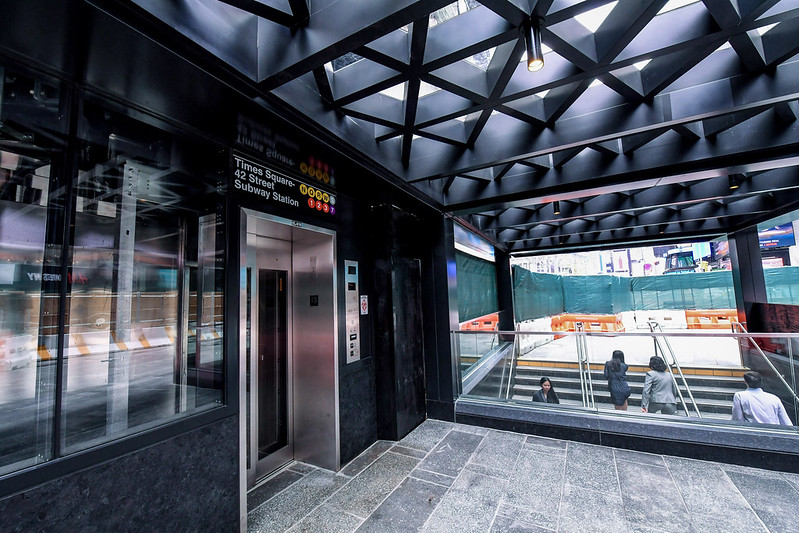
Photo: MTA
New York’s accessibility progress hinges on congestion pricing, report says
26 January 2024
by Christopher Carey
The New York University (NYU) Rudin Center for Transportation has released a new report looking at the path to achieving full accessibility on the city’s transit system.
The study has revealed that the Metropolitan Transportation Authority’s (MTA) ability to deliver the remaining accessible stations will hinge on the US$15 billion in capital funding expected to be generated from the Central Business District Tolling Program (CBDTP).
The congestion charge, which is set to be up and running this summer, will see a base toll of US$15 on every car entering Manhattan at 60th St. and below.
“The journey toward full stair-free accessibility in New York City’s public transportation system is at a critical juncture,” said NYU Rudin Center Director Sarah Kaufman.
“Despite historic underinvestment, the recent prioritisation of upgrades by the MTA has had positive impacts.
“Sustaining this momentum is imperative: The pace of progress directly impacts millions of New Yorkers. Investing steadfastly in universal accessibility will enhance daily rider experiences and pave the way for a more equitable and interconnected future for New York City.”
Challenges
In a 2022 settlement, the MTA committed to make at least 95 percent of subway stations accessible by 2055.
According to the Center, accessing the public transit system can present challenges for the 13 percent of New Yorkers with physical disabilities.
Currently, 30 percent of subway stations have elevators or ramps, significantly limiting services for those with ambulatory disabilities and other access needs.
While the MTA has accelerated its pace to retrofit stations with accessibility improvements, the report made additional recommendations to build on this progress to deliver results faster, including: implementing additional cost containment measures; bolstering infrastructure monitoring; improving the geographic distribution of accessible stations; broadening public engagement; and leveraging existing and emerging technologies for real-time data and improvements.
Since 2020, the agency has increased its average pace of building to over six stations each year, doubling the average of three in 2015.
In 2023, eight new stations were upgraded with accessibility improvements, but to “capitalise on this unprecedented pace” congestion pricing must be implemented, the report says.
“In the three short years I have been with the MTA, we’ve taken big steps toward our vision of a universally accessible transit system, making more than a dozen subway stations newly accessible, expanding features like wayfinding technology and new fare gates and rethinking the design of our buses to accommodate all riders,” said MTA Chief Accessibility Officer Quemuel Arroyo.
“To maintain our pace of progress, we need the funding expected from CBDTP to deliver this historic US$52 billion Capital Plan and those that will follow and we need advocates and elected officials alike to support these investments.”
While the congestion pricing is expected to be in operation this summer, a number of legal challenges have been mounted.
Most notably New Jersey Governor Phil Murphy has filed a lawsuit challenging the scheme, which has been described as “frivolous” by MTA CEO Janno Lieber.
Image: MTA











